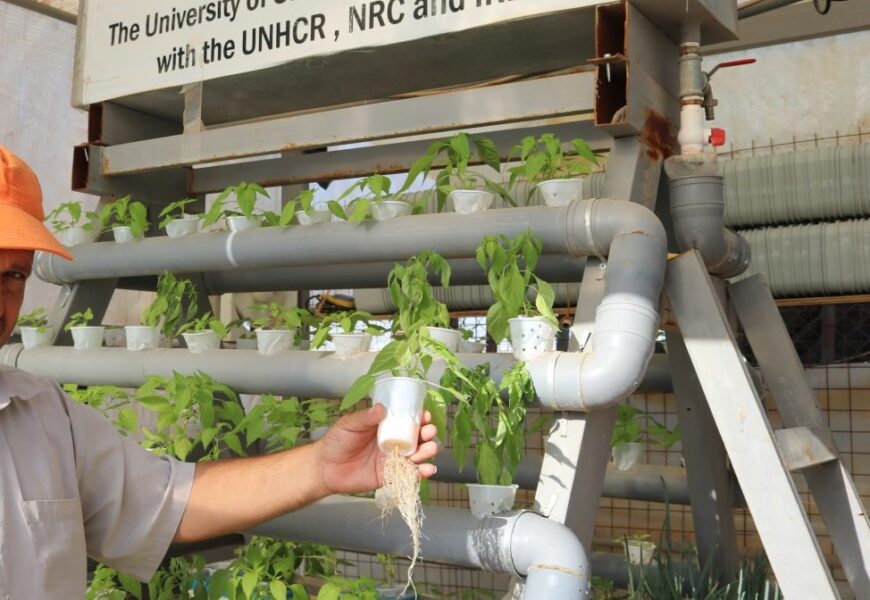The world is facing a stark reality: hunger is on the rise. Millions are grappling with food insecurity, a situation exacerbated by conflict, climate change, and a host of other complex challenges. This global hunger crisis is not just a statistic; it’s a human tragedy. The good news is that there are innovative solutions emerging to address this problem, and one such solution is FAO & WFP hydroponics.
Table of Contents:
1. Hydroponics: A Sustainable Solution for Food Security
The global food system is facing unprecedented challenges. Climate change, population growth, and resource depletion are putting immense pressure on our ability to produce enough food to feed everyone. The FAO and WFP recognize this urgent need and are actively promoting sustainable agricultural practices, including hydroponics, to address food security concerns.
Hydroponics, a method of growing plants without soil, has emerged as a potential game-changer in the fight against hunger. It offers numerous advantages over traditional agriculture, making it an attractive option for feeding a growing global population.
Hydroponics offers a revolutionary approach to food production. Instead of relying on soil, it utilizes nutrient-rich water solutions to nourish plants. This method boasts numerous advantages:
- Increased Yield: Hydroponic systems can produce significantly higher yields compared to traditional farming methods. This is due to optimal nutrient delivery and controlled growing conditions.
- Water Conservation: Hydroponics requires significantly less water than traditional agriculture, making it a water-efficient solution, especially in water-scarce regions.
- Reduced Environmental Impact: Hydroponic systems minimize the use of pesticides and herbicides, leading to reduced pollution and a healthier environment.
- Year-Round Production: Hydroponic farms can operate year-round, regardless of weather conditions, ensuring a consistent food supply.
- Reduced Land Footprint: Hydroponics requires minimal land space, making it ideal for urban and vertical farming, potentially solving space constraints in densely populated areas.
The potential of hydroponics for tackling hunger is undeniable. It provides a sustainable and efficient way to grow food, even in challenging environments, which makes it a critical tool in the fight against hunger and malnutrition. By implementing hydroponics techniques, the FAO and WFP are not only increasing food production but also empowering communities and fostering resilience in the face of global food security challenges.
For a deeper dive into the exciting world of hydroponics, check out these articles on our blog:
- The Ultimate Guide to Hydroponic Tower Gardens
- Hydroponic Growing System 101: How to Grow Your Own Food Without Soil
2. FAO & WFP’s Role in Promoting Hydroponics
The FAO and WFP are actively promoting hydroponics as a vital tool in combating hunger. Hydroponics is a method of growing plants without soil, using nutrient-rich water solutions. This innovative technique offers numerous advantages, making it a highly effective solution for food production in resource-limited areas. Both organizations have been working tirelessly to promote and implement hydroponic systems in different parts of the world, empowering communities to grow their own food, ensuring food security, and enhancing their livelihoods.
The FAO, through its “Food and Agriculture Organization of the United Nations” website and various initiatives, provides crucial information and resources on hydroponics. They provide guidance on best practices, technology advancements, and training programs to foster a deeper understanding and adoption of hydroponic systems. The WFP, on the other hand, focuses on integrating hydroponics into their emergency relief efforts, providing immediate food security for vulnerable populations. “The World Food Programme” is also collaborating with local communities to develop sustainable hydroponic solutions, ensuring long-term food security and poverty reduction.
Both organizations recognize the potential of hydroponics in tackling the global hunger crisis and are actively working to promote its adoption. Their joint efforts are paving the way for a future where food security is a reality for everyone, regardless of geographical location or resource constraints.
For example, the FAO has launched a program called “Hydroponics for Sustainable Agriculture” which focuses on using hydroponics to improve food security in developing countries. The WFP, on the other hand, has partnered with local communities in several countries to establish hydroponic gardens, providing fresh food to vulnerable populations. These initiatives are demonstrating the effectiveness of hydroponics in providing sustainable solutions to food security challenges.
However, the success of these initiatives hinges on effective partnerships, knowledge sharing, and continued investment. The fao wfp hydroponics effort needs to be strengthened through increased research, capacity building, and innovative financing mechanisms. This will ensure that these sustainable practices become widely adopted and that the impact of the fao wfp hydroponics initiative reaches every corner of the globe.
3. Case Studies: Real-World Success Stories
The potential of fao wfp hydroponics is not just theoretical; it’s being realized in practical applications around the world. Several success stories showcase the effectiveness of this approach in addressing food insecurity.
1. Urban Farming in Rwanda:
In Rwanda, the fao wfp hydroponics program has transformed lives by enabling urban communities to grow fresh produce in limited spaces. Learn more about how to build your own hydroponic system by checking out this guide on hydroponic tower gardens. The program provides training, seeds, and technical assistance, enabling individuals to cultivate nutritious vegetables year-round, regardless of weather conditions. This has led to increased access to fresh food, improved nutrition, and economic empowerment for urban residents.
2. School Gardens in Haiti:
After the devastating earthquake of 2010, Haiti faced significant food shortages. The fao wfp hydroponics program implemented school gardens, empowering students to grow their own food. These gardens serve as learning tools, promoting healthy eating habits and sustainable agriculture practices. The program also provides nutritious meals to students, combating malnutrition and improving their overall well-being.
3. Refugee Camps in Jordan:
Refugee camps often face challenges in accessing fresh food due to limited resources and harsh environments. fao wfp hydroponics has been instrumental in establishing vertical farms within refugee camps in Jordan. This initiative provides refugees with access to fresh vegetables, supplementing their diets and promoting self-sufficiency. Explore the benefits of hydroponic root microbiome and how it contributes to plant growth.
These case studies highlight the transformative power of fao wfp hydroponics in addressing food insecurity and promoting sustainable agriculture. By providing access to nutritious food, empowering communities, and fostering economic development, this approach offers a promising solution to the global hunger crisis.
4. The Future of Hydroponics in Combating Hunger
The future of hydroponics in combating hunger is bright. With continued research and development, hydroponic systems will become even more efficient and cost-effective, making them accessible to a wider range of communities. The FAO & WFP are committed to promoting the use of hydroponics as a key strategy for achieving food security.
As the world population continues to grow, the demand for food will only increase. Hydroponics offers a sustainable solution for producing food in a resource-efficient manner. By growing food without soil, hydroponic systems can reduce the need for land, water, and fertilizers, ultimately helping to protect the environment.
The FAO & WFP’s commitment to promoting hydroponics, coupled with the technological advancements in the field, will be instrumental in ensuring that everyone has access to nutritious and affordable food.
Conclusion
The FAO & WFP’s commitment to promoting hydroponics is a testament to the technology’s potential for addressing global hunger. Hydroponics can provide a sustainable and efficient solution for producing food, even in challenging environments. As the world faces increasing food insecurity, hydroponics is poised to play a crucial role in feeding the future.
Through their initiatives, the FAO & WFP are empowering communities to grow their own food, fostering economic development, and contributing to a more sustainable future.
References:
- The Ultimate Guide to Hydroponic Cannabis Cultivation
- Athena Nutrients Hydroponics: The Ultimate Guide to Success
- Hydroponic Root Microbiome: The Secret Sauce of Plant Growth
- The Ultimate Guide to Hydroponic Tower Gardens











